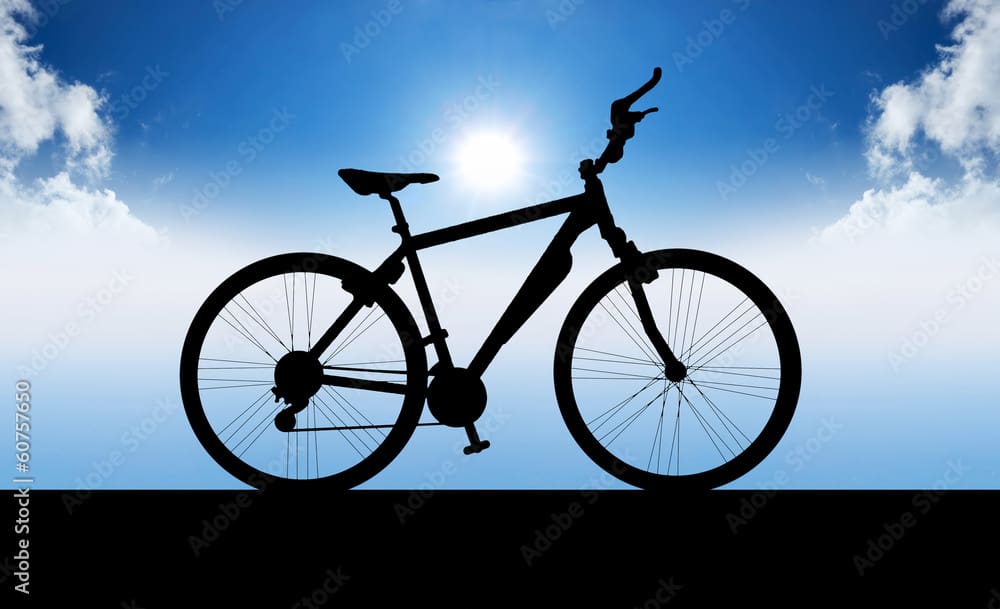Setting Cycling Goals for Beginners? Look No Further
As a beginner cyclist, it can be overwhelming to know where and how to start your journey.
Instead of getting overwhelmed, why not set some cycling goals to help motivate you and to keep you on track so that you can progress to the next level?
Whether you want to increase your endurance, ride longer distances, or simply enjoy cycling as a fun and healthy hobby, having goals in mind can get you where you want to go on your cycling journey.
So, stick around and we will look at actionable tips that you can use to set your cycling goals – no matter how big or small.

The Beginner’s Guide to Setting Achievable Cycling Goals – What to Consider and Why it Matters
As a beginner cyclist, setting goals can help you stay motivated and track your progress.
It is important to set SMART goals – specific, measurable, attainable, relevant and time-limited goals.
You don’t want a vague “get better at cycling” goal. This won’t give you any real direction or purpose for your training.
Be sure to write your goals down and keep them where you can see them.
Let me explain why setting goals is important as well as give you a few different types of goals you may want to set for yourself.
Why Set Goals?
Why not!
Setting goals will keep you on task and give you direction and purpose for your training.
Without goals, how do you stay motivated? How do you know what to do to make gains? How do you track your progress? How do you know when to celebrate??
Seriously, is there anything better than the feeling you get when you crush a goal?? It certainly puts a smile on my face – not to mention bragging rights!
Once you hit that goal it just makes you want to immediately set the next bigger and better goal.
If you’re at all competitive, like me – it’s a rush!
Types of Goals and Examples
There are different types of cycling goals that are great for when you are just getting started.
Just remember to keep your goals realistic.
Don’t aim too high, you will only become discouraged. Start slow – remember you are just starting out; you need to find your baseline.
Goals are intended to motivate you – not defeat you.
Here are some simple goals to consider implementing:
1. Distance Goals
Consider setting a realistic distance goal.
This needs to be individual to you and your abilities.
For example, if you can only ride for 2-miles without stopping don’t aim to ride 20-miles within the next week.
Instead set a goal to ride 5-miles without stopping – or 3 miles.
Once you hit that goal, increase the distance to 10 or 15 miles.
Before you know it you will be on that century ride!
2. Time Goals
Another type of goal is to aim for a certain amount of time on your bike.
Again, don’t plan to ride 60-90 minutes within the next week if a 15-20-minute ride leaves you sore and tired.
Instead set a goal to ride for 30 minutes without stopping.
As you progress, increase the time to 45 or 60 minutes.
3. Fitness Goals
You can also set fitness goals to improve your overall health and fitness.
This is a great goal for anyone that is riding for a fun and healthy hobby.
You could just set a simple goal to ride three times a week for four weeks to improve your cardiovascular fitness or decrease your stress level.
4. Training Volume Goals
Setting training volume goals will help you to gradually increase the amount of time you spend on the bike each week.
A good example – try setting a goal to ride for a total of 90 minutes in the first week, this could be a 30-minute ride 2 times a week or a 20–25-minute ride 4 times a week.
Gradually increase the time to 120 minutes in the second week. You could just add an extra day to your 30-minute rides or do a 40-minute ride 3 times a week.
Do whatever works with your schedule and tolerance on the bike.
5. Hill Climbing Goals
I personally feel that this needs to have it’s own goal. Hill climbing for beginners can be hard and intmidating.
So, do you have that hill that you have been wanting to tackle but just don’t think you can do it?
A hill climbing goal can help you get up the courage to give it a try.
Start small, set a goal to get up a smaller hill with a gradual incline.
When you are able to do that hill without stopping move on to another bigger goal.
Try a hill that is higher or maybe has a steeper incline.
Before you know it you will be kicking that big hills butt!

Setting goals can help you stay motivated and track your progress as a beginner cyclist.
By setting different types of goals, you can improve your fitness gains and training volume.
Creating a Cycling Plan
As a beginner cyclist, creating a cycling plan can help you achieve your goals and stay on track with your progress.
Here are some steps that I implemented to help me safely and successfully reach my goals.
Make sure that you create a plan that is tailored to your fitness level and goals.
Assess Your Fitness Level
Before creating a plan, it’s important to take an honest look at your current fitness level – find your baseline.
This will help you determine your starting point and set realistic goals in order to succeed.
Here are some things to consider:
- Endurance: How long can you ride comfortably?
- Strength: How much power can you generate on the bike?
- Fitness: How often do you exercise and what is your overall fitness level?
You can also consider talking to your doctor and maybe take a fitness test.
The 4 components that a fitness test measures is strength, stamina, speed and flexibility. The exercises used to complete the test will vary.
Training Plan
Once you have assessed your fitness level, you can start to create a training plan that will help you reach your personal goals.
Here are some things to include in your training plan:
- Endurance training: This type of training focuses on building your endurance and increasing your overall mileage.
- Strength training: This type of training focuses on building your power and increasing your overall strength on the bike.
- Off-the-bike training: This type of training focuses on building your overall fitness level through activities such as running or weightlifting.
By assessing your fitness level and creating a cycling plan – you will find that achieving your goals and tracking your progress will be easier.
Training Tips for Beginners
To succeed with crushing your goals, you need to start with good training habits to develop your skills and improve your performance.
Here are some training tips to get you started:
Consistency
Consistency is key to making progress in cycling.
It’s better to train regularly, even if it’s just a short ride, rather than doing a long ride “once in a while”.
Try to ride at least 2-3 times a week, and gradually increase the duration and intensity of your rides.
This will help you stick with your program. Consistency leads to habits.
Training Volume
As a beginner, focus on building your endurance by gradually increasing your training volume.
Start with shorter rides and slowly increase the distance as you get stronger.
Keep track of your progress by using a cycling app or a training log.
This has been super important in helping me stay focused on my goals. My favorite app is Strava.
Active Recovery
Rest and recovery are just as important as training.
Make sure to take at least one day off each week to allow your body to recover.
You can also do some active recovery rides at a low intensity to help your muscles recover and improve your overall fitness.
Training Plans
Following a structured training plan can help you achieve your cycling goals more efficiently.
Look for a plan that suits your fitness level and goals, and make sure to stick to it.
There are several free training plans online, or you can hire a coach to create a personalized plan for you.
By following these training tips, you can establish good habits and make steady progress as a beginner cyclist.
Just remember to listen to your body, stay hydrated, and have fun!
Nutrition and Hydration
Alright, let’s get one thing straight. If you’re a beginner cyclist trying to achieve your cycling goals, incorporating good nutritional habits into your routine is crucial.
However, that doesn’t mean you have to choke down kale smoothies and cut out carbs completely.
Trust me, I love a good burger as much as the next person. But fueling your body with the right nutrients will ultimately determine your success on the bike.
Think of it like this: you wouldn’t put low-grade gasoline into a Ferrari, would you? Treat your body like the high-performance machine it is and feed it the good stuff.
Plus, who doesn’t love a little extra energy and endurance during those long rides?
So go ahead, indulge in that occasional burger and fries, but also load up on the fruits, veggies, and protein that will help you reach your cycling goals.
Your body will thank you, and so will your bike.

Ways to Celebrate your accomplishments: Find Ways to Reward Yourself
Well, imagine this: You’re a cycling newbie, just starting out on your path to fitness and accomplishment.
Day after day, you diligently pedal your way through the miles, sweat dripping down your forehead and determination fueling your legs.
Before you know it, you’ve hit your first cycling goal and you’re ecstatic!
But wait, don’t forget to celebrate your success! Rewarding yourself for your hard work is crucial, after all.
It could be as simple as treating yourself to a delicious smoothie or going on a shopping spree for some new cycling gear.
Find what works for you and don’t be afraid to indulge.
Celebrating your successes not only feels great, but it also motivates you to keep pushing forward and look forward to reaching your next goal.
So go ahead, give yourself a pat on the back and never forget to enjoy the ride.
Conclusion
Setting cycling goals is an excellent way for beginners to stay motivated and make consistent progress.
By setting realistic and achievable goals, you can build confidence and gradually improve your skills and fitness level.
One effective way to set cycling goals is to use the SMART method, which stands for Specific, Measurable, Attainable, Relevant, and Time-bound.
This method helps you set clear and specific goals that are achievable within a certain timeframe.
Another useful tip is to track your progress using a cycling app or a fitness tracker.
This allows you to see how far you’ve come and gives you a sense of accomplishment that can motivate you to keep going.
Remember to take it slow and listen to your body. Don’t push yourself too hard too soon, and make sure to rest and recover between rides. Cycling is a fun and rewarding activity that can improve your health and wellbeing, and setting goals can help you get the most out of it.
